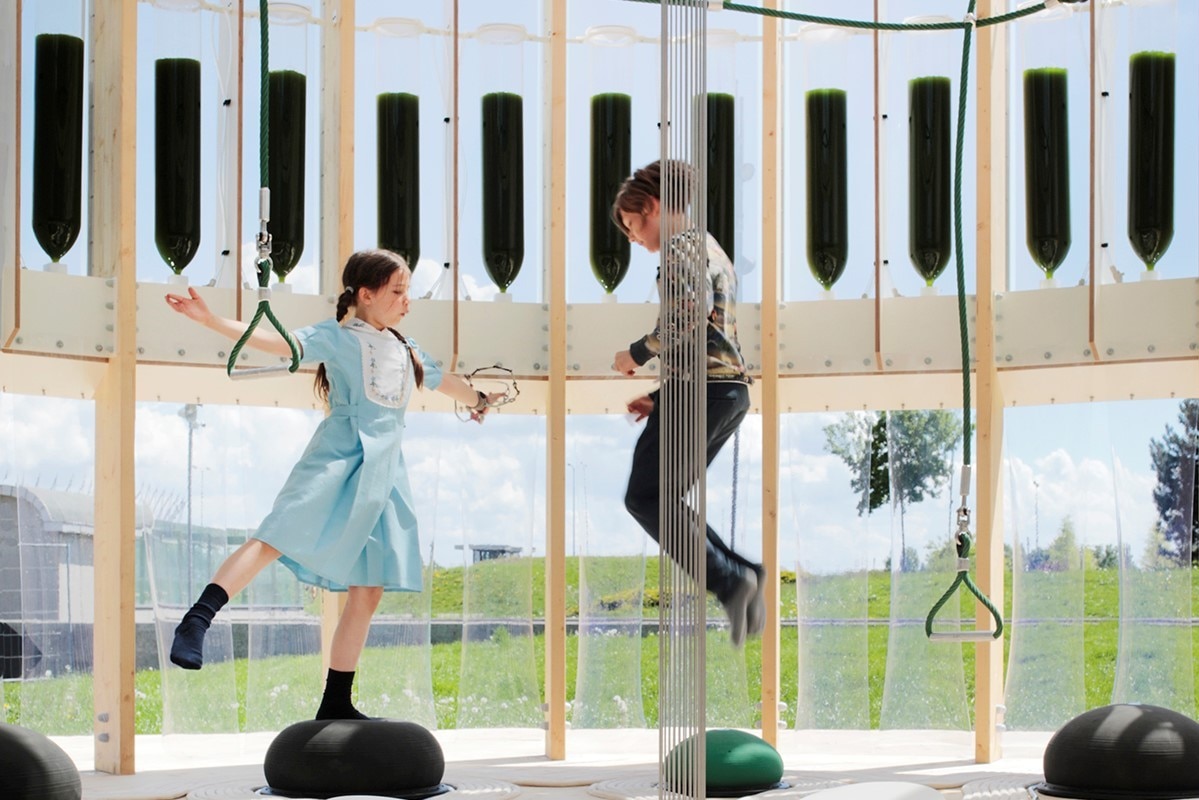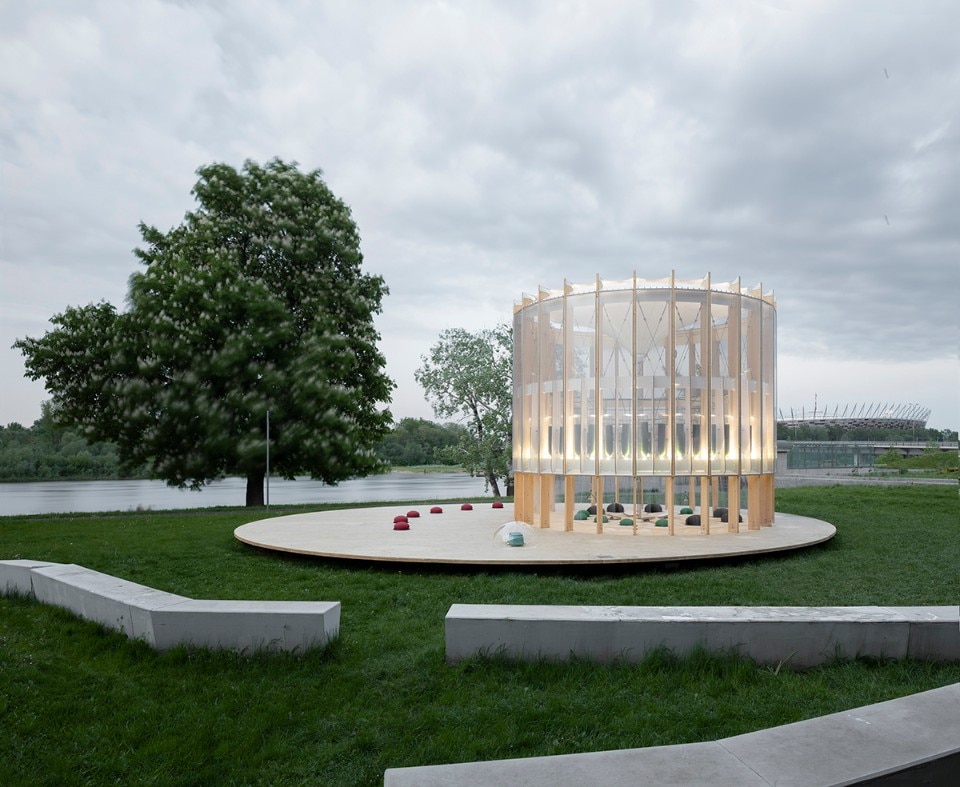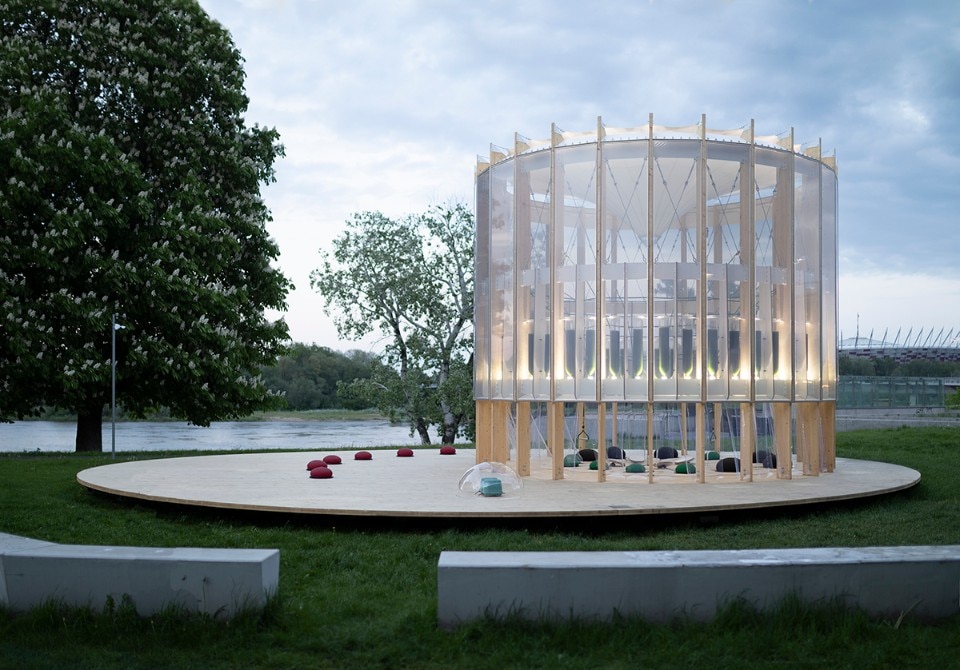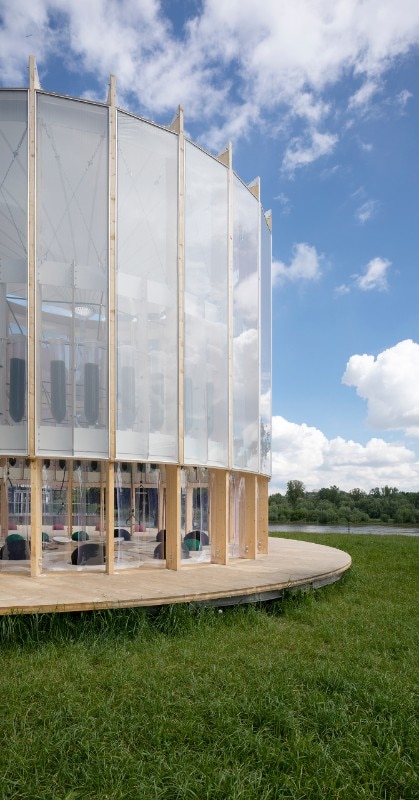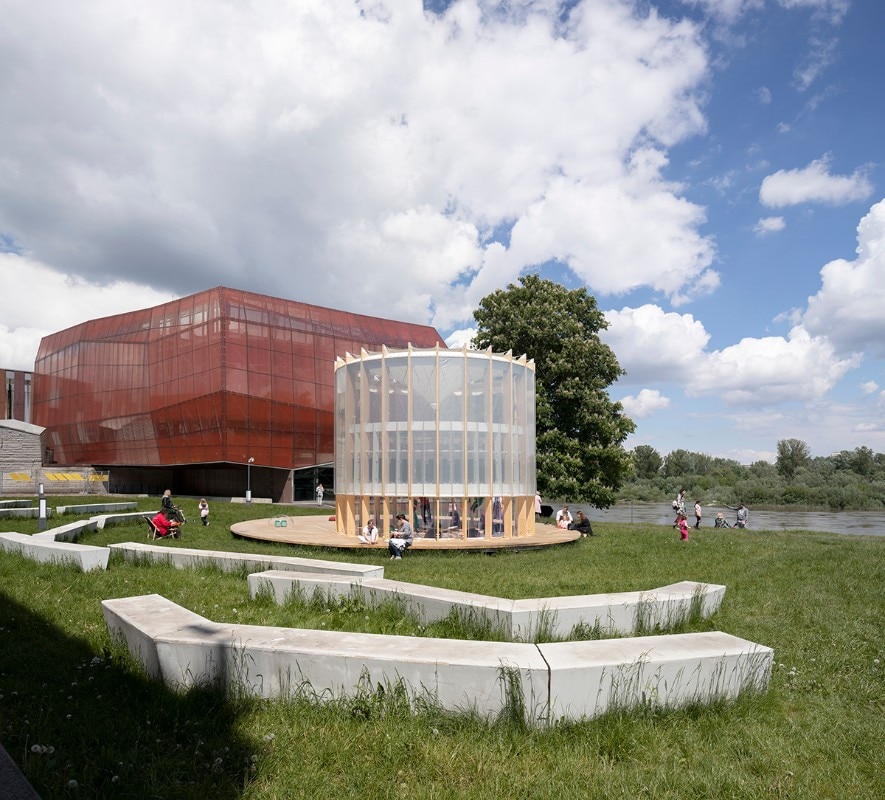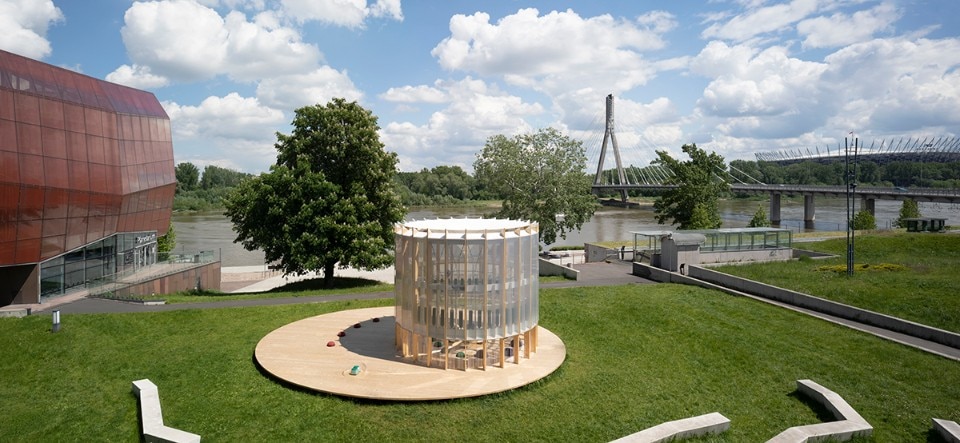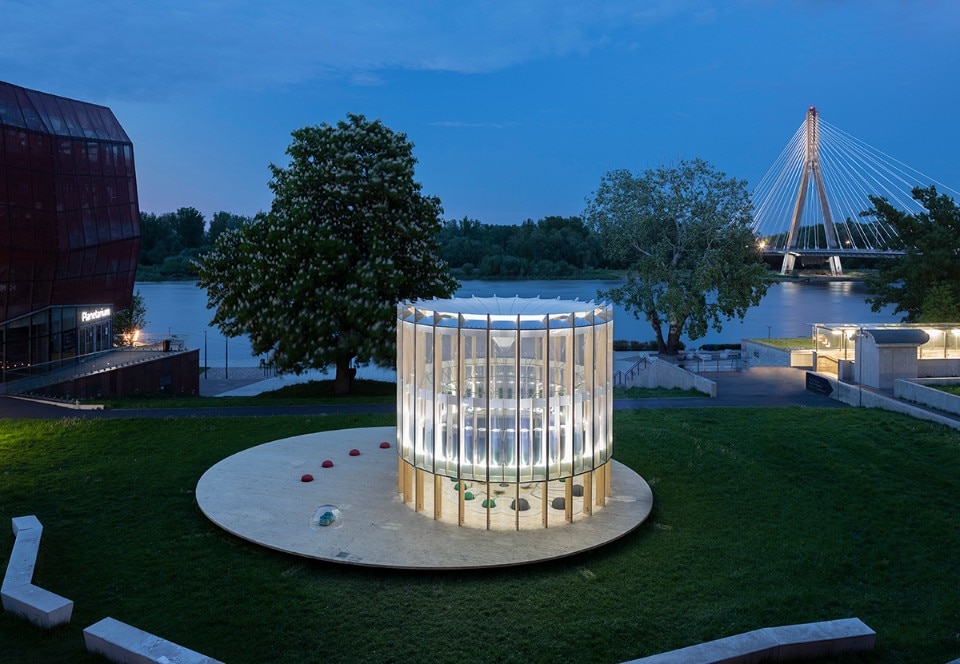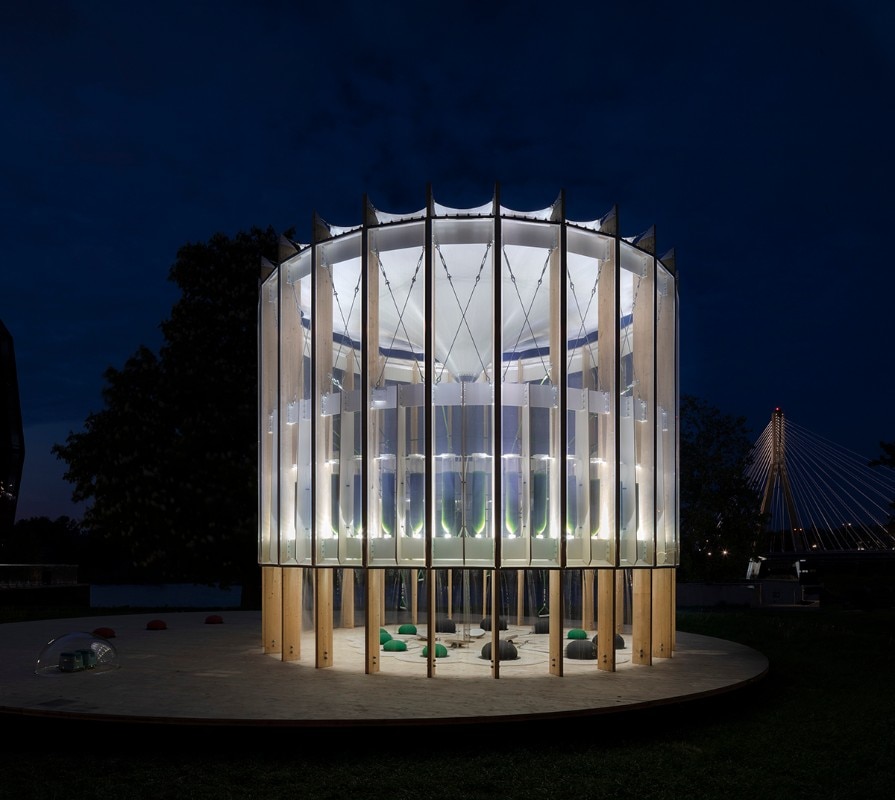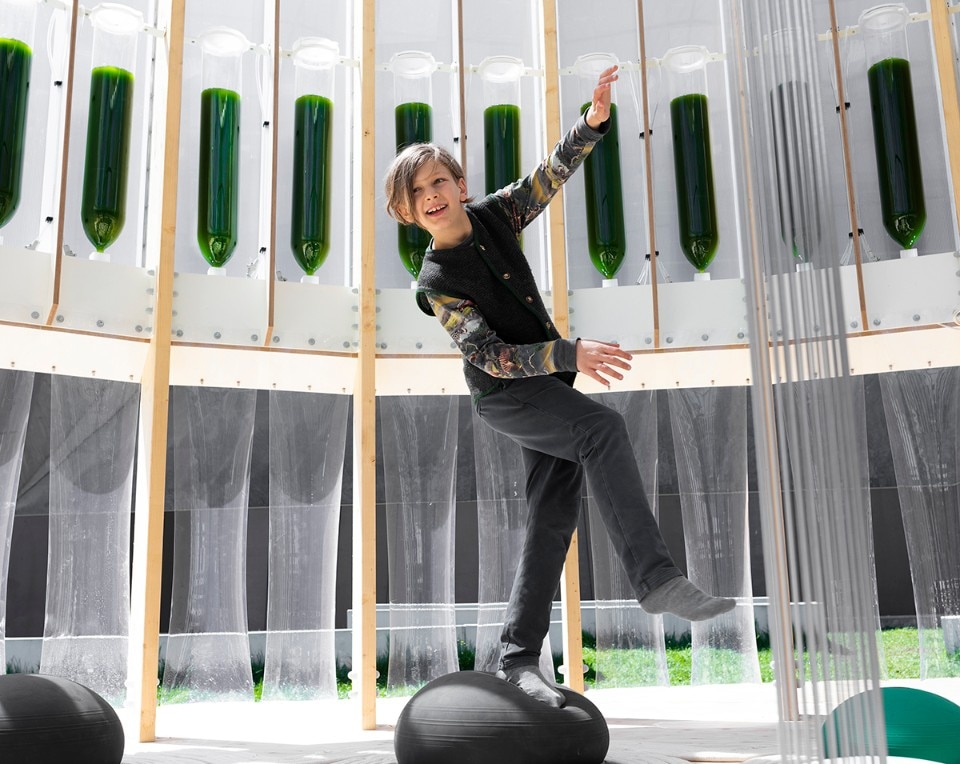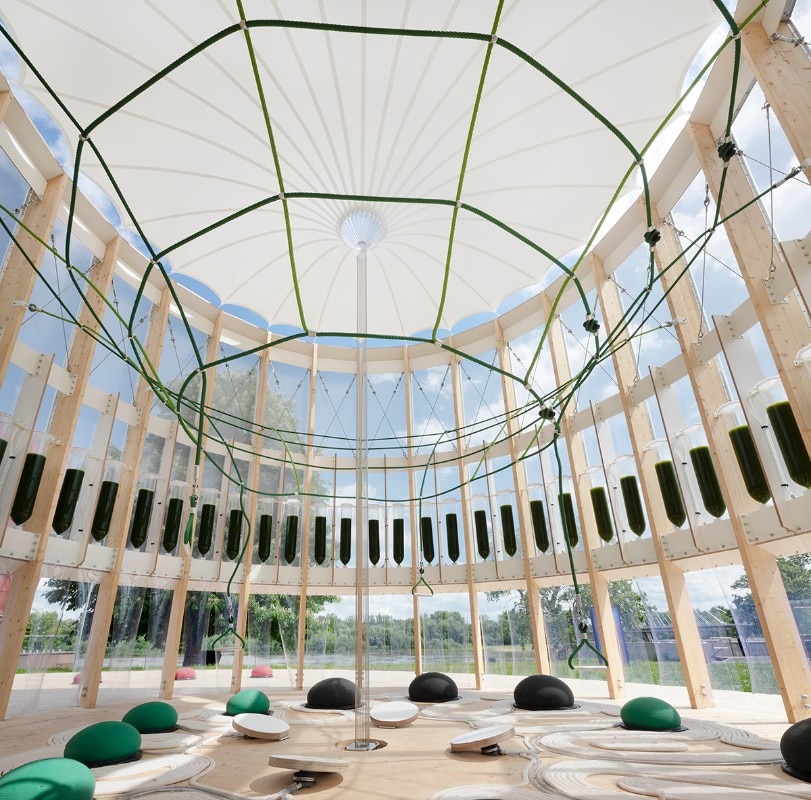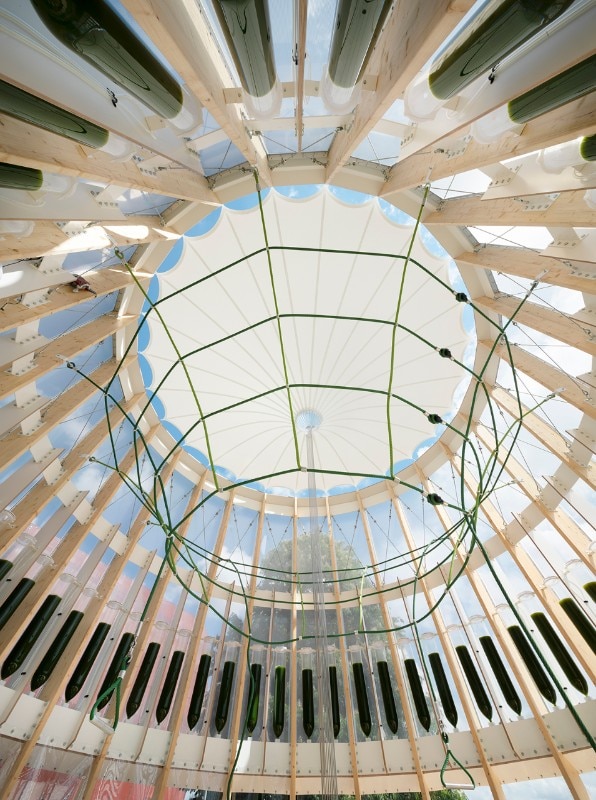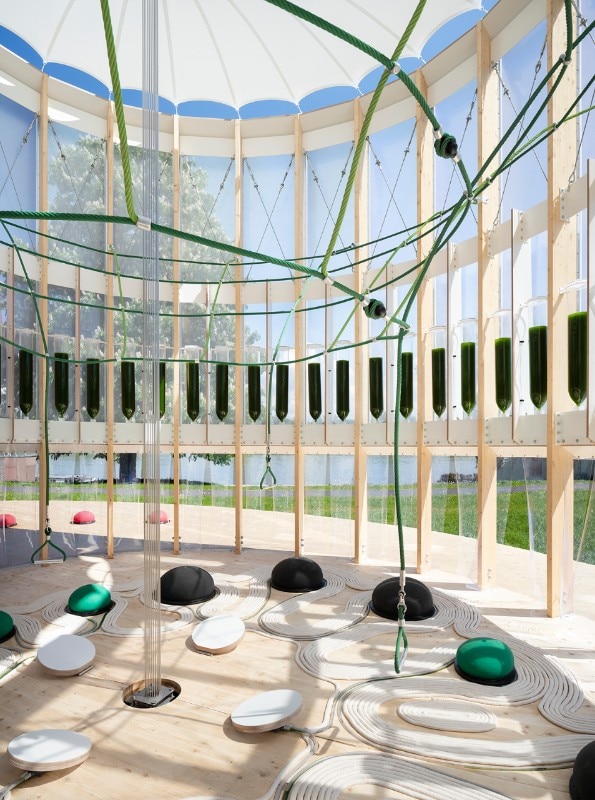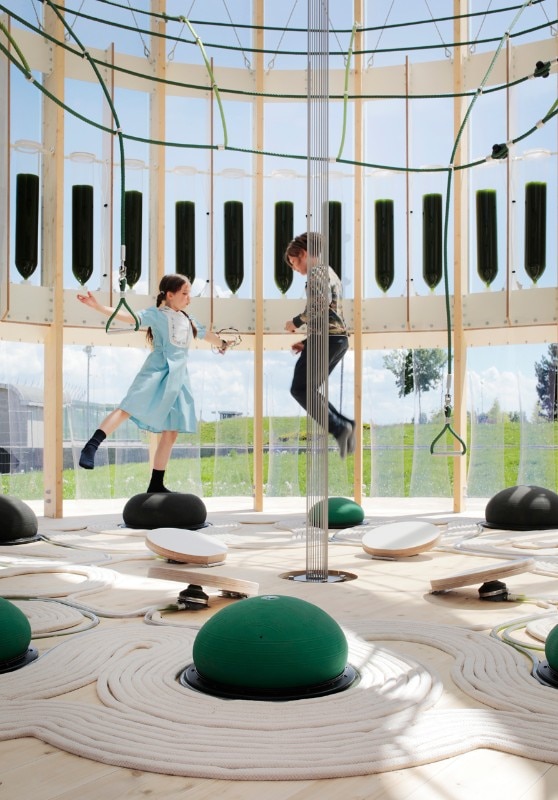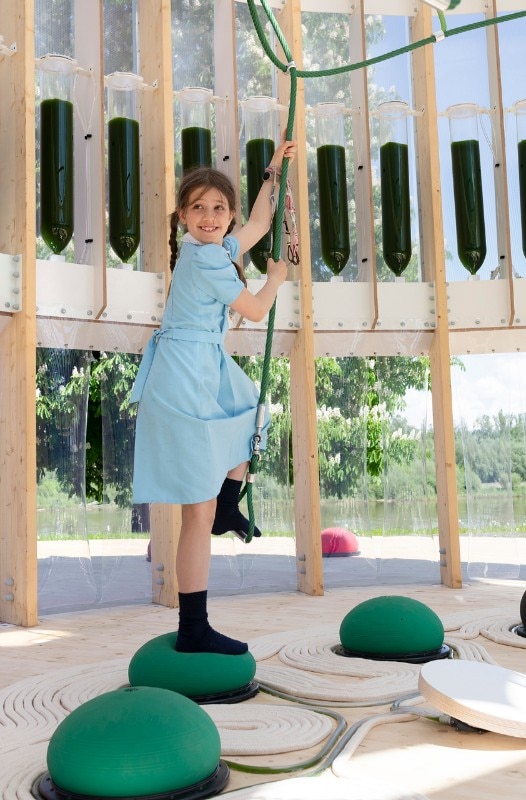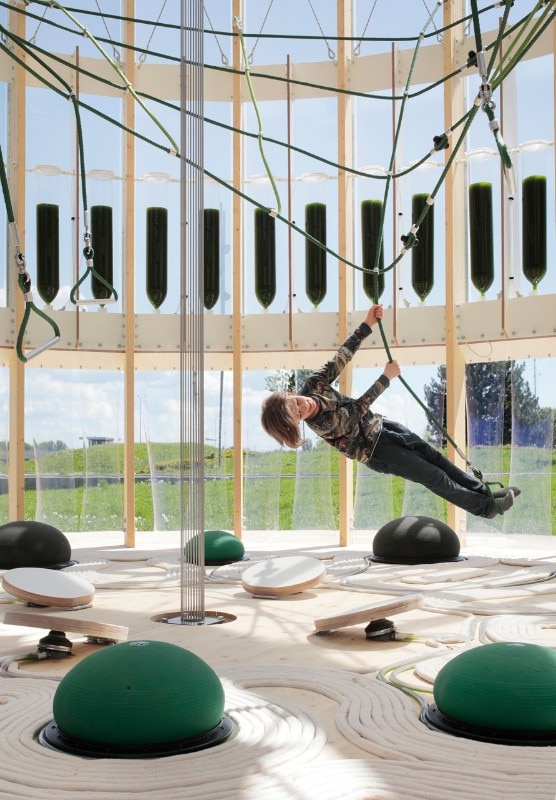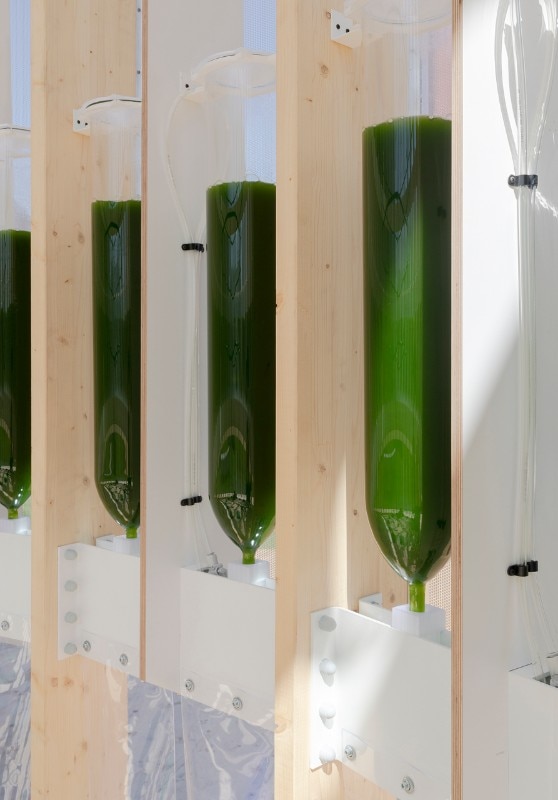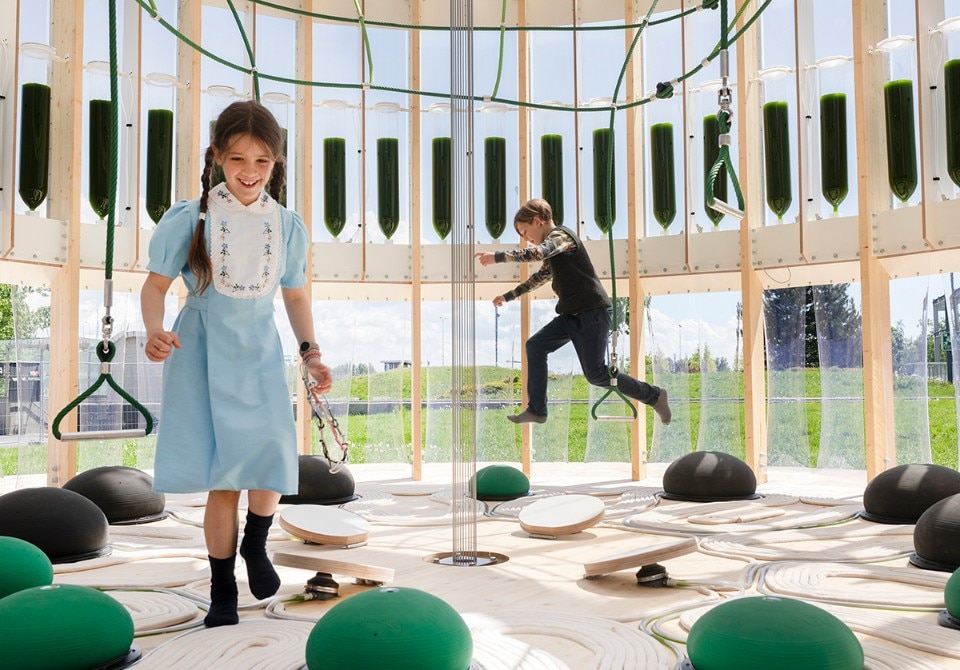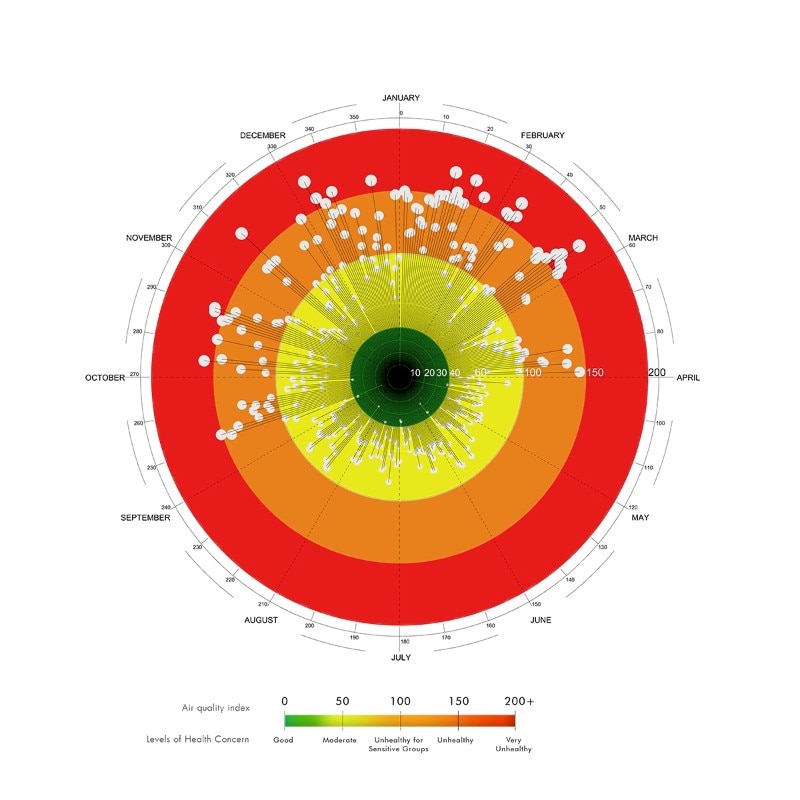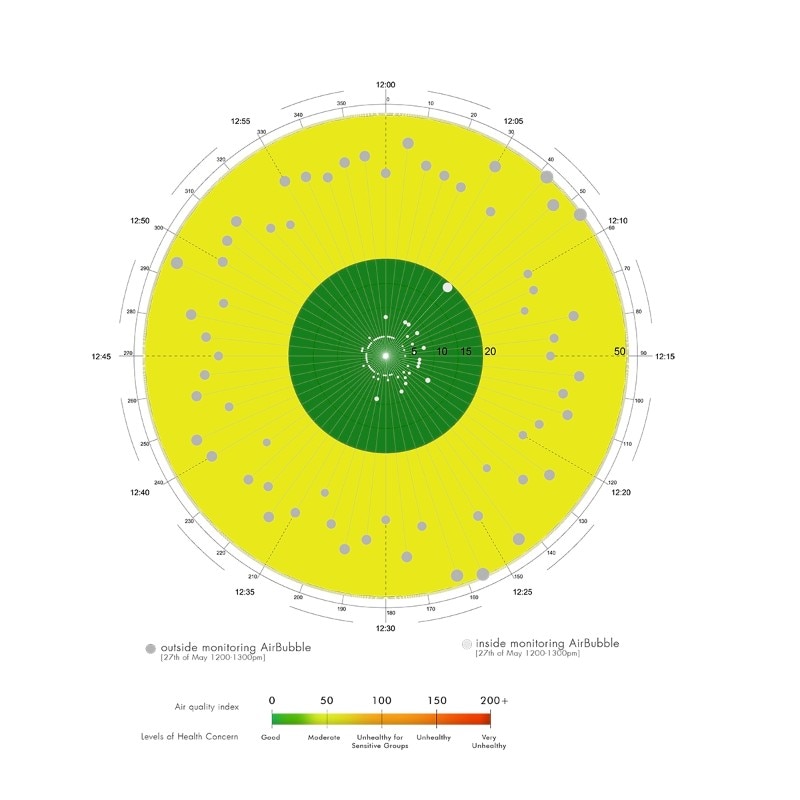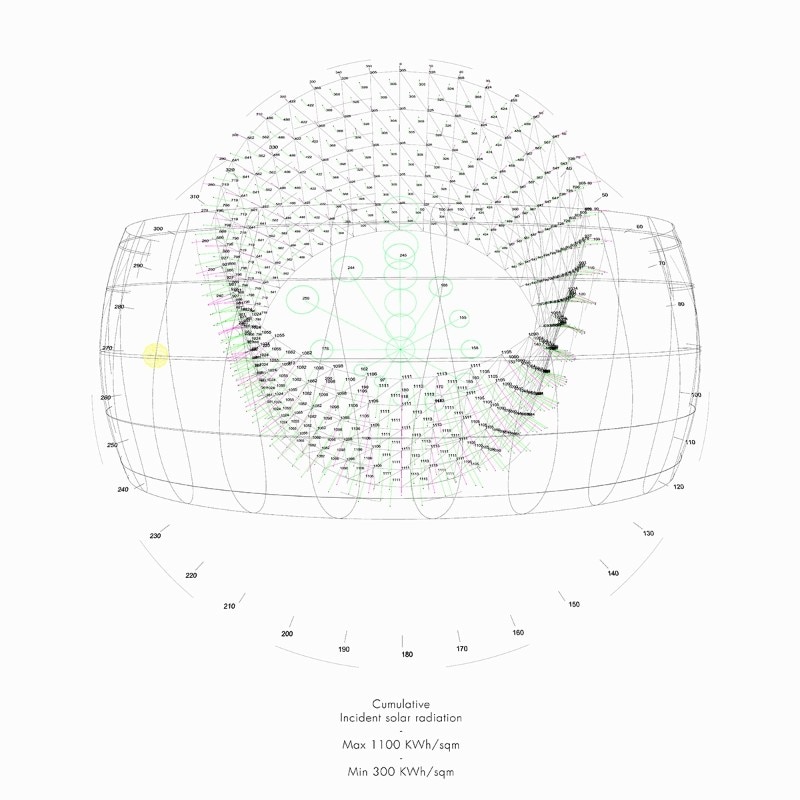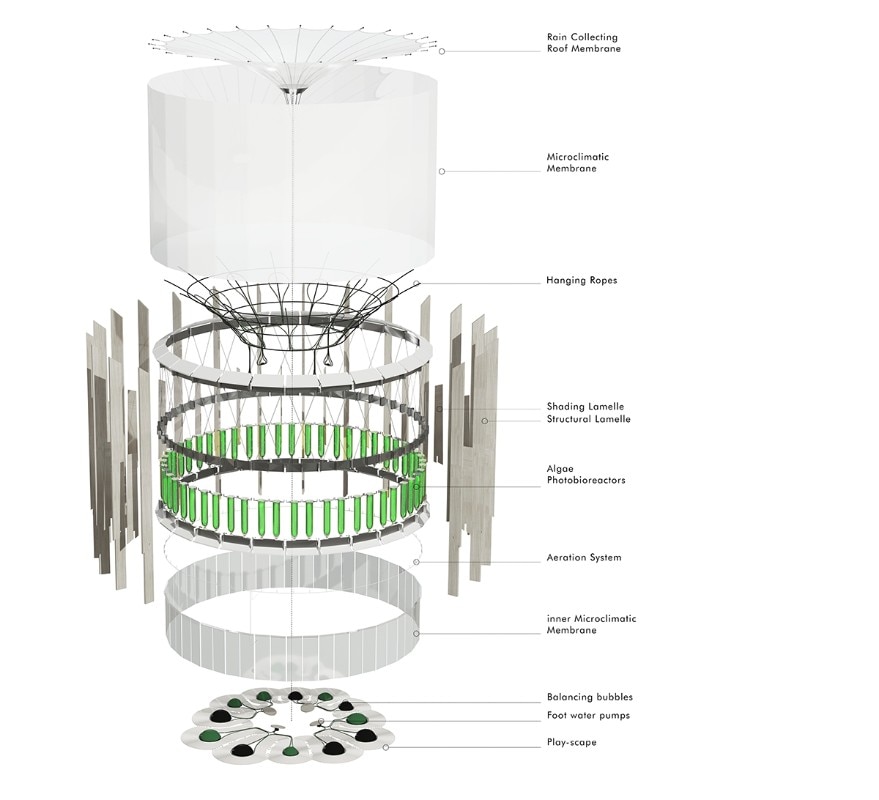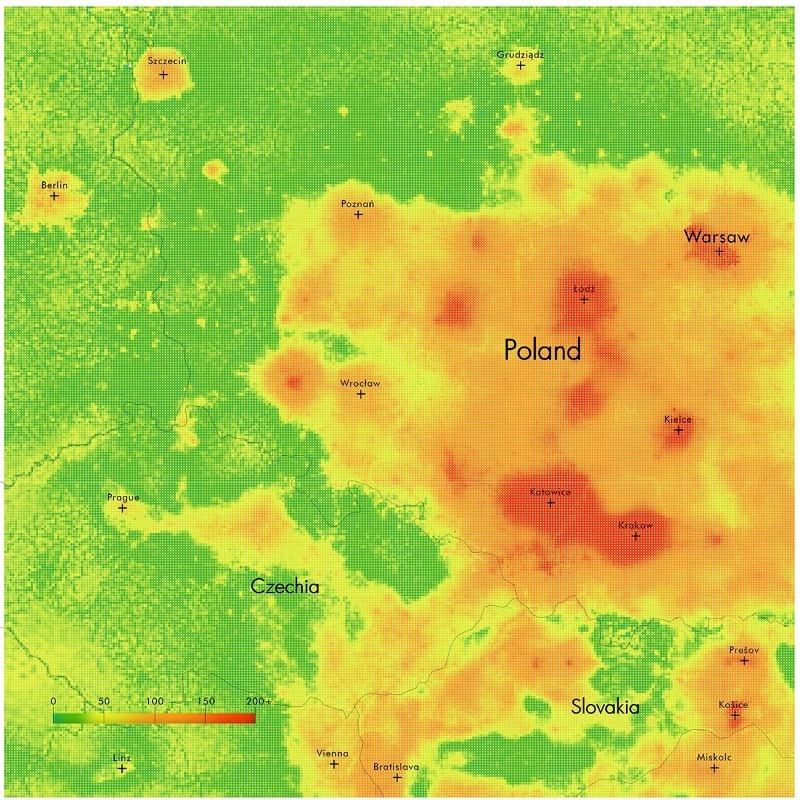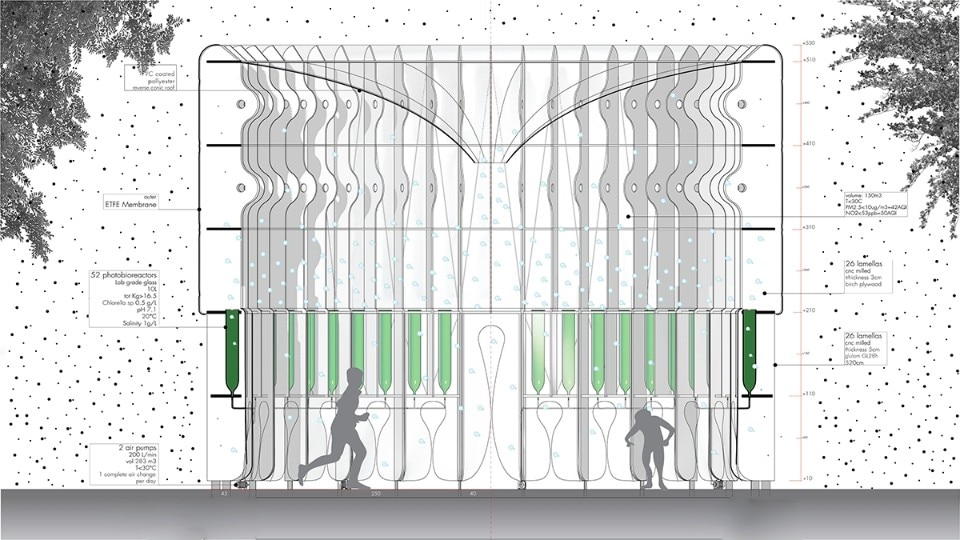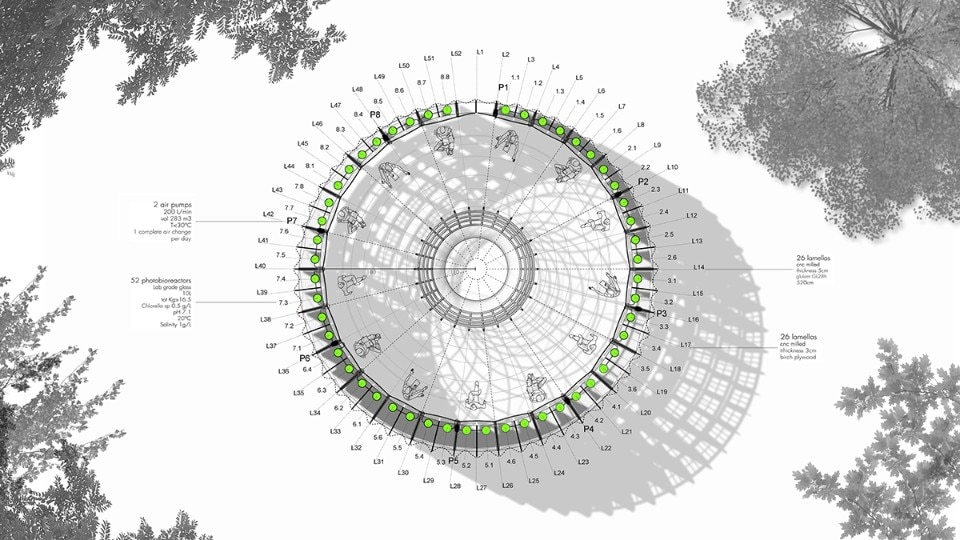This article was originally published on Domus 1060, september 2021.
In ten years, ecoLogicStudio has experimented with applying microalga on different scales and in different contexts: interiors, offices, architectural frames and urban spaces, just to mention a few.
The installation-garden Hortus dates to 2012; it hosted bioluminescent alga and bacterial micro- and macro-organisms.
That same year the exhibition “cyber-Gardening the city” took place and explored the future of urban agriculture. In 2018 it was time for PhotoSynthetica™, a façade system that, thanks to microalga, in 2 m2 has the photosynthesis potential of an adult tree.
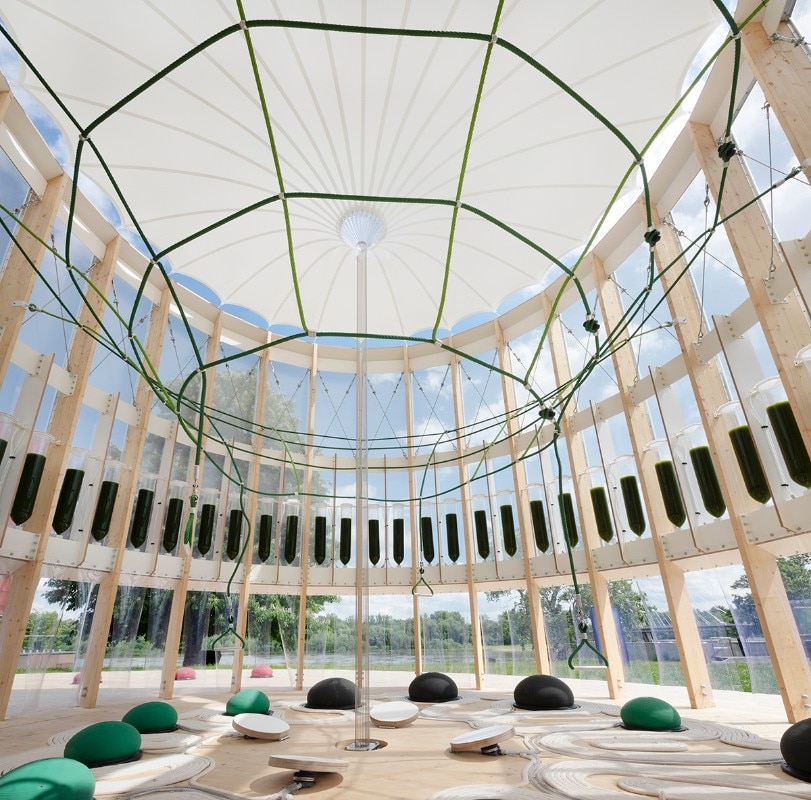
AirBubble, the latest design by the studio founders Claudia Pasquero and Marco Poletto, made this year in Warsaw for Otrivin Breathe Clean (a brand of the GSK multinational), takes another step forward on the road to the concrete feasibility of these systems and invents a new architectural typology: the biotechnological playground that purifies air.
A cylindrical structure in wood, wrapped in an ETFE membrane (a transparent plastic material with resistance to high temperatures and atmospheric agents), contains 52 large bioreactors in borosilicate glass holding 520 litres of green alga cultivation (Chlorella sp), which can filter an air flow at 200 litres/ minute and releases clean oxygen.
These playgrounds need two energy sources: solar and the instincts of children to explore and play. AirBubble is the trigger in a process that can only grow and multiply its beneficial effects for future generations. It’s all in our hands, we are responsible for our health and climate,” explains Claudia Pasquero.
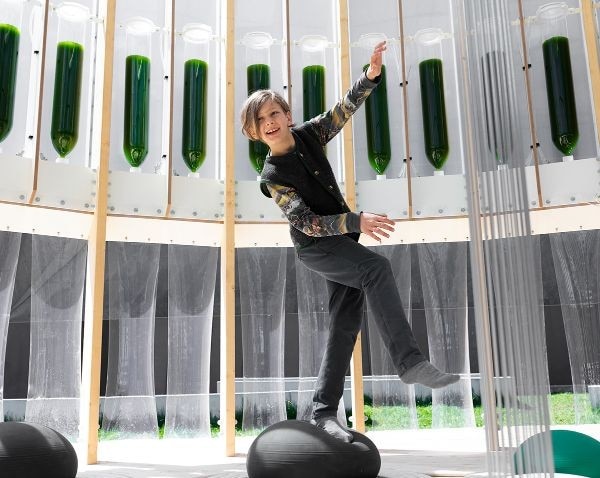
As the kids pull on ropes, activate pedal pumps and jump on soft globes, the system – equipped with atmospheric pollution sensors and connected to a platform that compares data in real time – measures the air quality index.
In the first months, it absorbed 97 per cent of nitrogen and 75 per cent of air particulates, and the monitoring with continue over the next months, transforming it into a testing ground for biotechnology used against atmospheric pollution.
- Opening image :
- AirBubble playground, EcoLogicStudio. Photo Maja Wirkus


